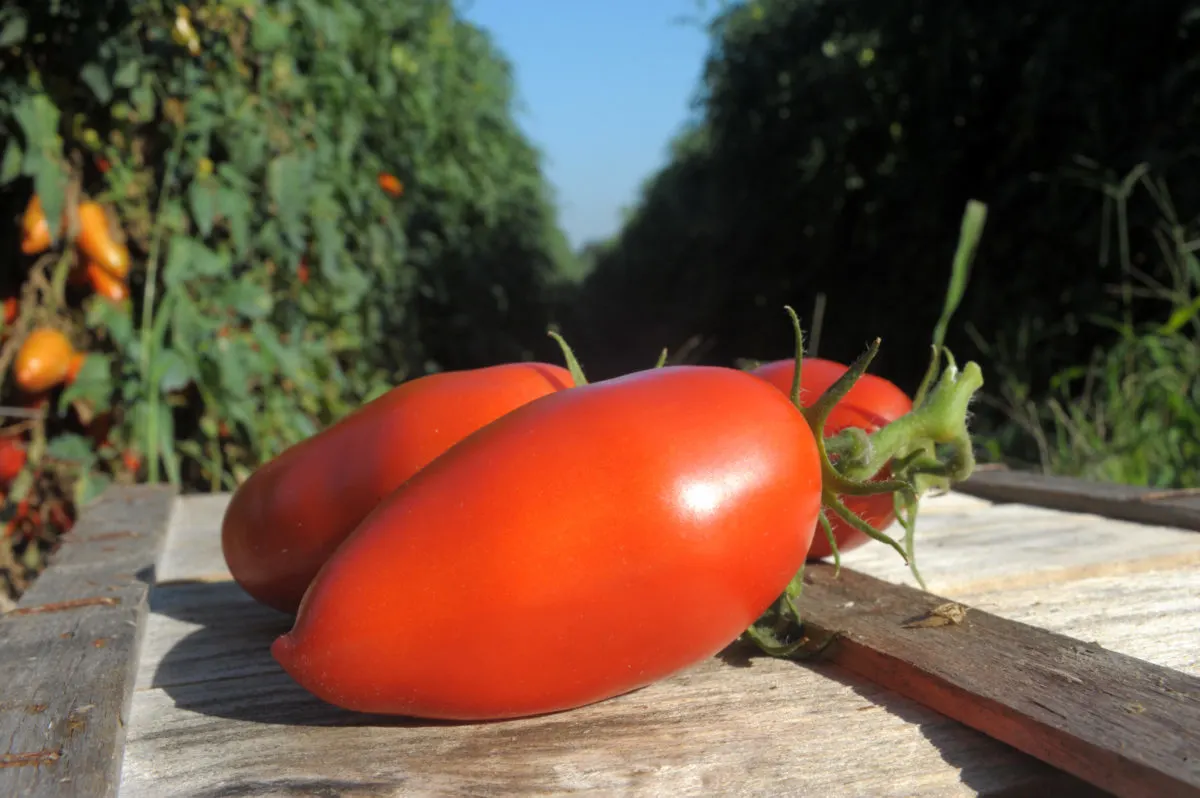
When it comes to heirloom tomato varieties, few names are as recognizable as San Marzano.
This tomato, famous for its Italian origins and uses in famous dishes like Neapolitan pizza, is beloved around the world not only by gardeners, but primarily by chefs and home cooks for its prized flavor.
If you’re searching for a paste tomato to grow in your garden, this one should be first on your list.
Fast Facts
- Origin: Italy
- Type: Indeterminate
- Fruit: Plum/paste tomato
- Size: 6+ feet
- Days To Harvest: 85
San Marzano Origins & History
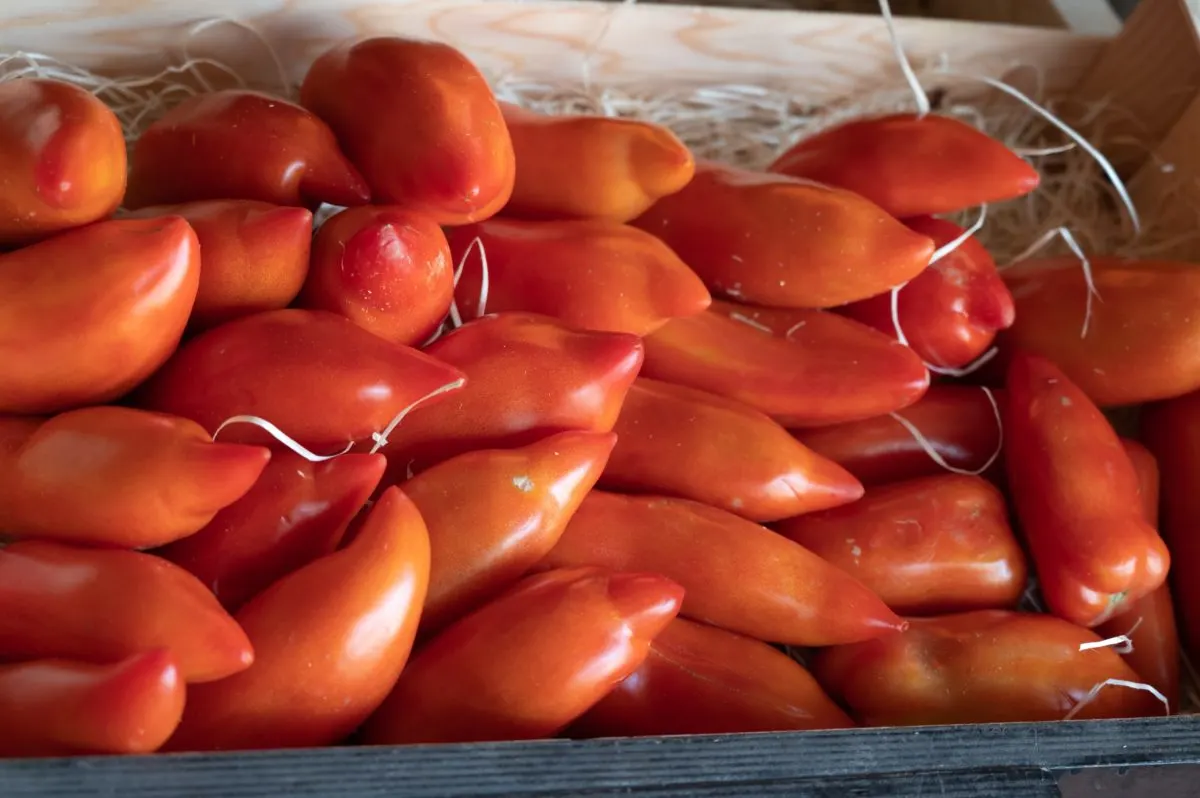
Of all the tomato origin stories, San Marzano is arguably the most fascinating. True San Marzano tomatoes are grown in the Sarno River Valley in the Italian region of Campania. This is close to the city San Marzano, hence the name. Found in the southwest parts of Italy, the home of the San Marzano is near a famous Italian food region – Naples.
Like many gardening origin stories, there is plenty of myth and legend surrounding the history of this heirloom.
When it comes to San Marzano tomatoes, they are believed to have reached Naples as a gift to the King from the Viceroyalty of Peru. While there isn’t much evidence to back up this story, it does provide insight into how prized these tomato plants really are.
What makes these tomatoes so special is the soil they are found in. The first real San Marzano tomatoes grew along the base of Mount Vesuvius in rich volcanic soil that is believed to give them their special character. Volcanic soil is high in phosphorus and potassium – two macronutrients essential in the production of flowers and, more importantly, fruits.
A prized export of the region, San Marzano tomatoes can only be officially labeled and sold under the name if they are grown in this area. Think of the rules surrounding the labeling of champagne from Champagne in France. Under EU law, true San Marzano tomatoes must come from the Sarno Valley and will have the EU ‘DOP’ (Denominazione d’Origine Protteta) emblem.
Despite these restrictions, you are welcome to grow San Marzano tomatoes in your own backyard. They may not taste as good as the real thing, but their flavor is still superior to many other paste tomatoes.
Flavor Profile
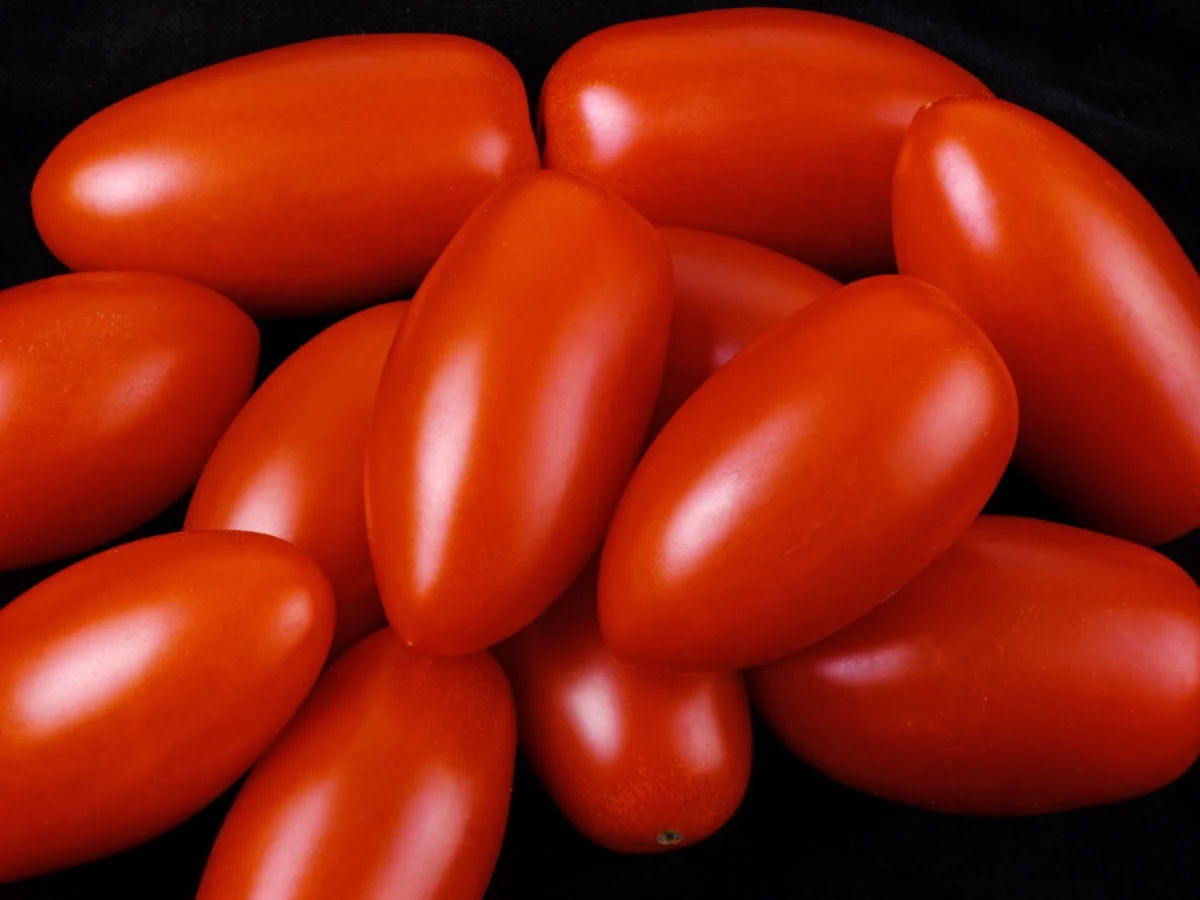
San Marzano tomatoes are hailed as the best-tasting plum tomatoes you can buy. The many protections surrounding how they are grown and canned certainly provide evidence of that.
They are also the first choice in the production of proper Neapolitan pizza, arguably the most famous pizza in the world.
There are a few factors that contribute to their superior taste. Thicker flesh and a low moisture content produce a strong and intense tomato flavor that is rich, but not overwhelming. Despite the low moisture content, the outer flesh is still soft and has a wonderful texture that makes them ideal for cooking.
San Marzano tomatoes have a sweeter taste than similar tomatoes too, and mild acidity that makes them useful in things like sauces that require high quantities of tomatoes. They also have few seeds, a preferred characteristic in many recipes.
Essentially, these tomatoes balance the best aspects of the fruits, topped off by a flavor punch that lends them to many uses in the kitchen.
Best Uses For San Marzano Tomatoes

In case you haven’t already guessed, one of the main uses for San Marzano tomatoes in Italy and around the world is for pizza sauce. The texture is thick and smooth without being watery thanks to the tomato’s low moisture content. This also applies to pasta sauces, with the sweet flavors combining well with Italian herbs like oregano.
Recipe: Simple San Marzano Tomato Sauce
As a paste tomato, any sauce-based dish is really suitable for San Marzanos. Tomato-based curries are one example, with the sweetness of the fruits balancing well with the heat of the spices added. Even regular stews will benefit from the addition of these tomatoes, allowing you to create thicker sauces without watering them down.
All these uses point to San Marzano tomatoes being used cooked rather than raw. Any tomato dish that involves cooking – even for soups – will be ideal. While they can be used fresh, they are far superior in saucy recipes.
If you have many fruits left at the end of the season that you don’t know what to do with, they are also ideal for canning. This allows you to extend their lifespan, perfect for use in the colder months of the year when your plants die back.
What Are San Marzano Tomatoes Best Known For?
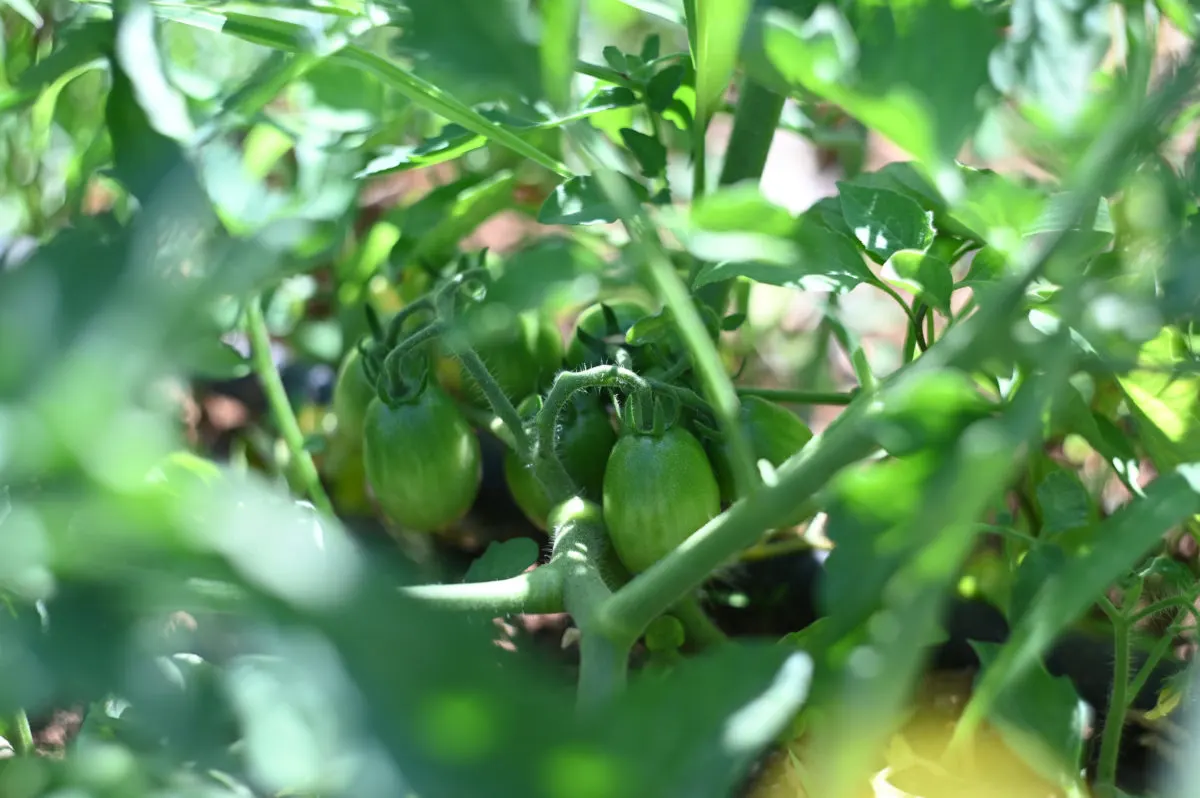
With so many protections surrounding San Marzano production, it is no wonder that the fruits are best known for their uses in the kitchen. They are the preferred plum tomato choice by chefs around the world. Even avid home cooks know to look for the official DOP sticker on a San Marzano tomato can for the real thing.
In the garden, they have an interesting shape, with long narrow fruits and easily identifiable pointed ends. They have a slightly longer season than some other tomato varieties, better suited to warmer climates to get the most out of the plants.
Where To Buy San Marzano Tomato Seeds
San Marzano plants are slightly trickier to find than some of the more popular varieties. However, you can usually find seeds online for purchase, depending on the season. Try one of these online retailers if you’re looking for seeds:
How To Grow San Marzano Tomatoes
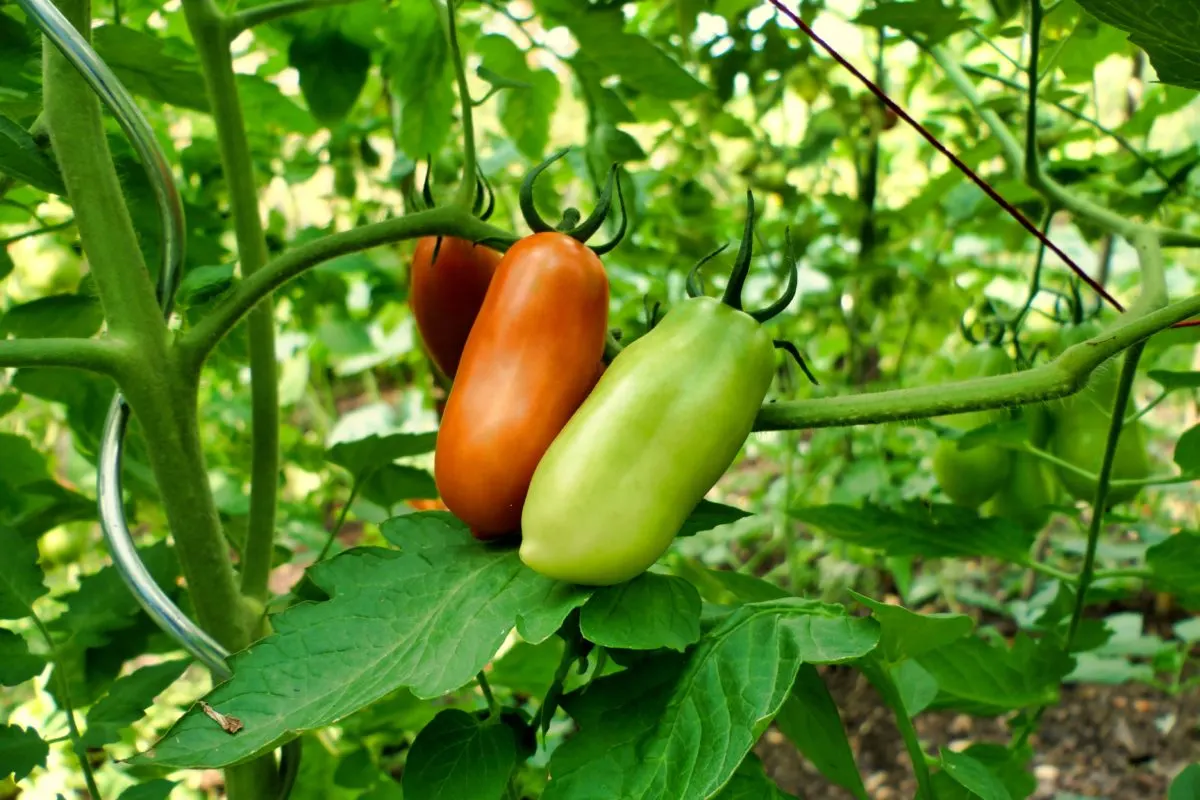
San Marzano tomatoes are not tough plants to grow. But they will produce better-tasting fruits with the right care, from planting all the way to harvest.
If you live in a cooler climate, it’s best to start seeds indoors in winter to get a head start on the growing season. Since the fruits mature quite late, you’ll want to harvest as many as possible before the first frost of fall kills off the plants.
As they are indeterminate tomatoes, San Marzano plants will require support to keep the vines off the ground and prevent disease. Install a stake or cage at the time of planting to avoid disturbing the roots later on.
Water consistently from the early stages of growth to promote strong stems and lush leaves. This will support the plant later on during flowering and fruiting. Feed with a fertilizer higher in phosphorus and potassium to replicate the volcanic soil conditions that make the fruits so tasty.
With regular tomato plant care, your San Marzano tomatoes will be ready to harvest in just under three months to enjoy in the kitchen.
For a full step-by-step guide to growing San Marzano tomatoes from start to finish, read our guide below:
